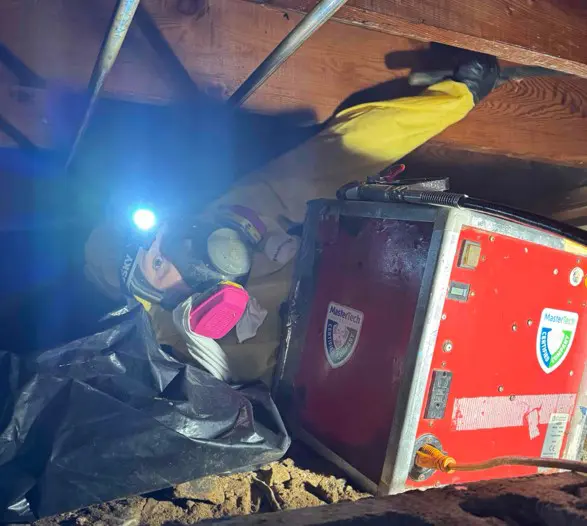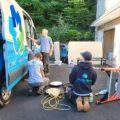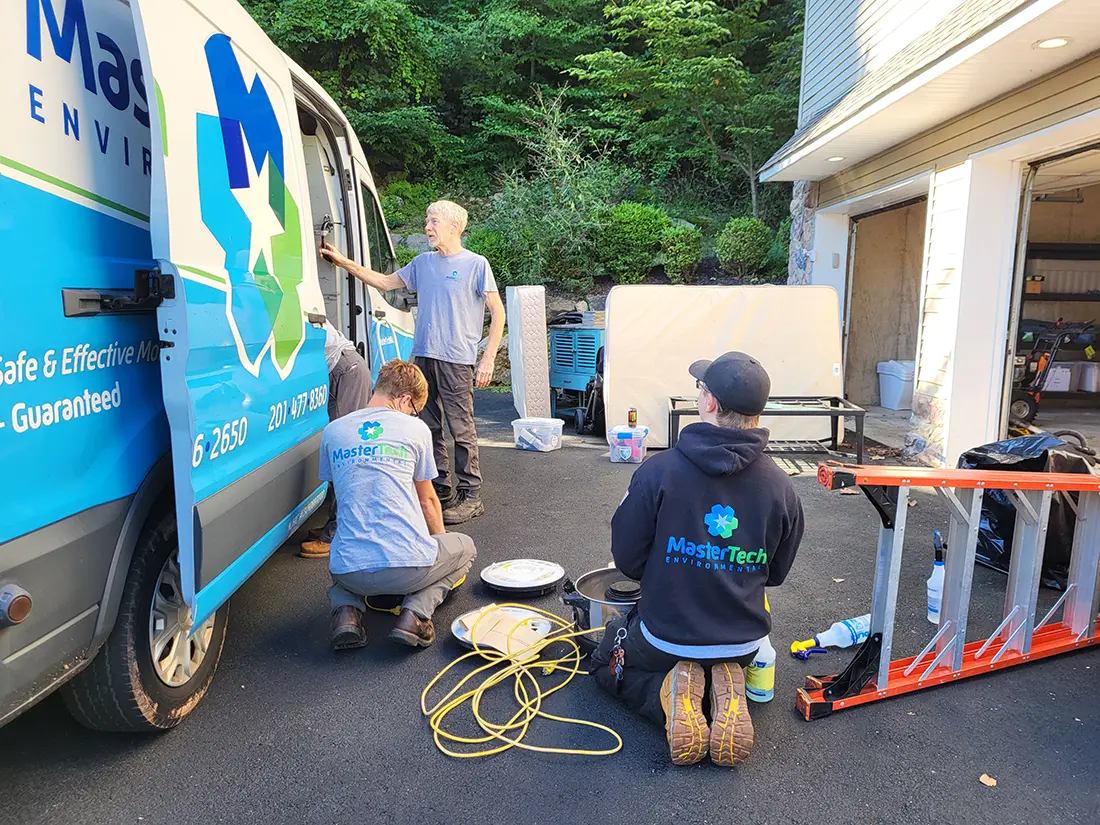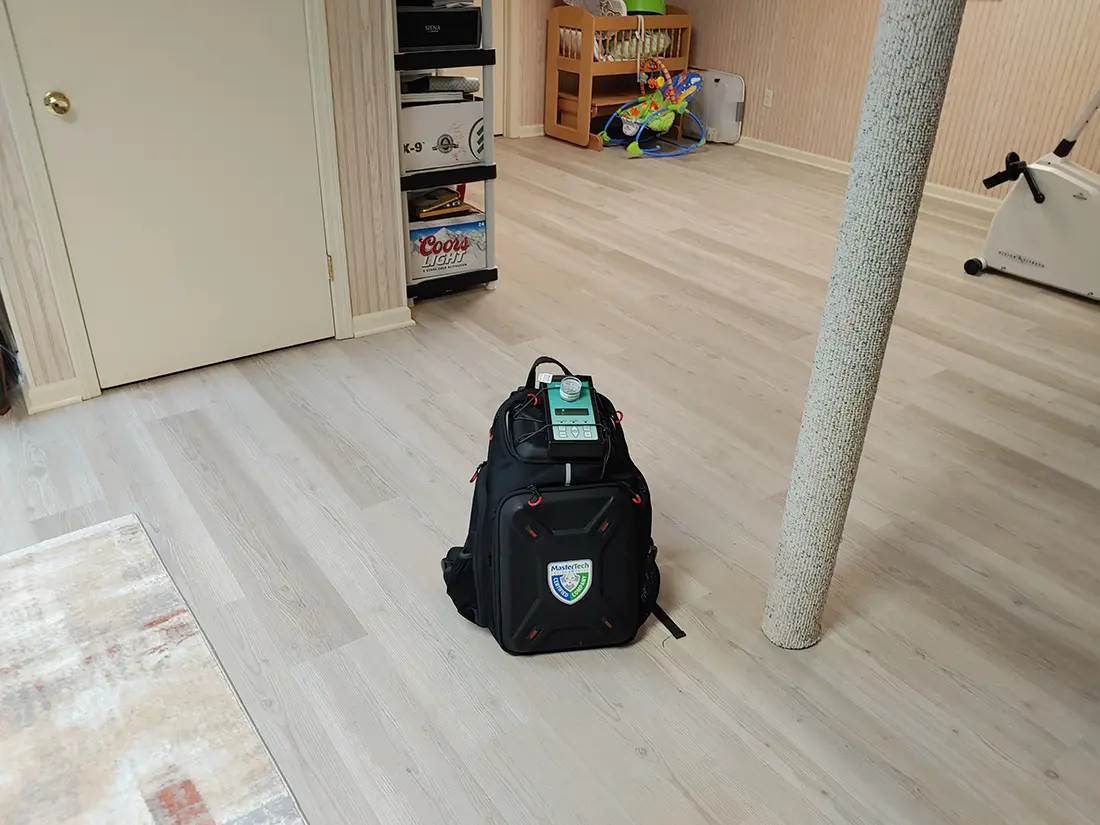If you’re here, you’ve probably noticed suspicious spots in your bathroom, caught an unpleasant, musty smell in your basement, or perhaps someone in your home is experiencing mysterious respiratory issues. These signs can leave you feeling anxious, worried, and unsure of what to do next. Your first instinct might be to grab one of those DIY mold test kits from your local hardware store—after all, they’re cheap, accessible, and promise quick results.
But before you trust your family’s health and home’s safety to a home mold testing kit, it’s essential to understand precisely what these kits can and cannot do. Effective mold testing involves much more than setting a dish out overnight. It requires accurate identification of mold types, understanding hidden mold growth, and pinpointing exactly why mold is thriving in your Orange County home. Here’s what you need to know about the DIY route versus professional mold testing Orange County.
Why Orange County Homeowners Often Reach for DIY Mold Testing Kits
When faced with mold, a DIY mold testing kit can seem like an obvious choice. After all, mold tests are widely available online and at local stores, they promise quick answers, and they’re priced attractively. It’s understandable why you’d want to handle this on your own, especially if you’re already juggling the expense of other home repairs. DIY mold tests tap directly into your desire for fast solutions and immediate reassurance.
However, before investing in these kits, it’s crucial to recognize exactly what they offer. DIY mold tests typically rely on methods known as “settle plate applications,” which collect mold spores as they drift naturally onto a plate left out for 24 to 48 hours. Sounds simple enough—but unfortunately, simplicity doesn’t translate into accuracy.
Limitations of DIY Mold Testing Kits
DIY mold testing kits seem like a practical option until you discover their significant limitations. Understanding precisely why these kits often fall short can help you avoid costly mistakes.
False Positives and False Negatives
Mold is everywhere. It’s in the air you breathe right now—indoors and outdoors. DIY mold tests often fail to distinguish between naturally occurring mold spores and those indicating an indoor mold problem. As a result, these kits often yield false positives, suggesting a severe mold issue when one does not exist.
False negatives occur, too. Because DIY mold tests rely on spores settling into a dish, they cannot detect hidden mold colonies that may be behind walls or under carpets. If mold isn’t airborne or is located in hidden areas of your home, a DIY kit might give you a false sense of security that your home is mold-free.
- DIY tests detect only mold spores present in the air during the testing period. They miss hidden mold in walls, floors, or ceilings.
- False positive results lead to unnecessary anxiety, expense, or misguided attempts at mold removal.
- False-negative results can leave hidden mold untreated, allowing it to continue growing, causing property damage, and potentially leading to health issues.
Limited Identification Capability
If your DIY test confirms the presence of mold, the next critical step is to understand precisely what type of mold you’re dealing with. Is it harmless mildew, or could it be toxic mold such as Stachybotrys (commonly called black mold)? Unfortunately, home mold test kits often provide limited or confusing information about the specific mold species.
To identify mold types, DIY kits typically require you to send samples back to their labs for analysis. The results that come back often use confusing scientific terms, such as “Stachybotrys,” forcing you to conduct extra research. Without clear interpretation, the report does little to help you decide on the best course of action.
- DIY mold tests require additional lab fees, significantly increasing costs beyond the initial purchase.
- Results often return in complex lab jargon, making them difficult for homeowners to understand without professional interpretation.
- DIY test kits do not clearly indicate whether mold is toxic or allergenic, increasing homeowner uncertainty.
No Identification of Mold Source
Even if your DIY test correctly identifies mold species, these tests offer no clues about where the mold is located or why it’s thriving. Mold doesn’t simply appear—there’s always a source of moisture involved. Without identifying the moisture source, mold will likely return repeatedly, regardless of how thoroughly you clean.
- DIY kits leave you guessing about why your home has mold in the first place, leaving the root issue unresolved.
- DIY kits fail to identify moisture sources that cause mold growth.
- Without addressing moisture problems, mold inevitably returns even after DIY removal attempts.
- A persistent mold issue resulting from unresolved moisture can escalate quickly, leading to costly repairs down the road.
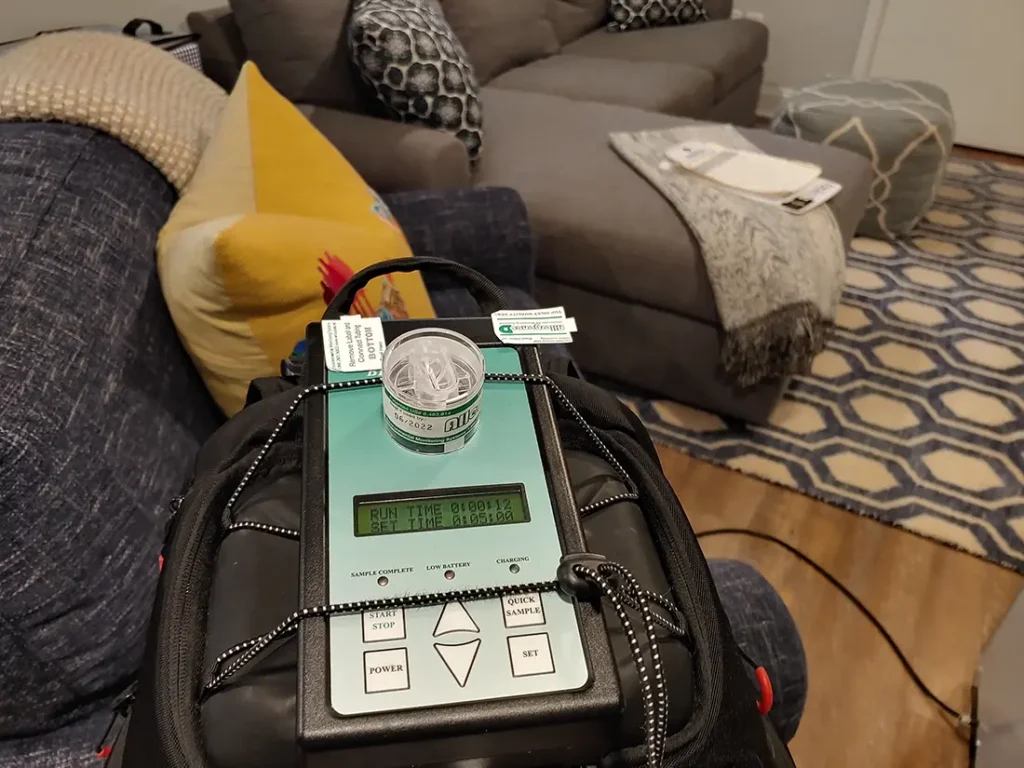
Why Professional Mold Testing Orange County Makes a Crucial Difference
When your health and home depend on accurate mold information, professional mold testing is not a luxury—it’s a necessity. Certified microbial investigators (CMIs) utilize precise tools, rigorous laboratory analysis, and detailed reporting to ensure you have a clear and accurate understanding of your mold problem.
Comprehensive Visual and Instrumental Inspection
Professional mold testing begins with a detailed visual inspection of your home, including hard-to-access areas such as attics, crawl spaces, and behind walls. CMIs utilize specialized tools like moisture meters, thermal imaging, borescopes, and hygrometers. These devices reveal hidden mold growth by pinpointing moisture not visible to the naked eye.
- Thermal imaging cameras detect moisture trapped behind walls and ceilings.
- Moisture meters identify hidden dampness in building materials.
- Borescopes allow inspectors to visually verify mold growth behind walls or inside air ducts.
Accurate Identification and Laboratory Analysis
Professional mold testers collect targeted air and surface samples, which are then sent to accredited independent laboratories. Labs accurately identify mold species and concentration levels, giving homeowners detailed information about potential health risks.
Unlike DIY kits, professional mold testing clearly distinguishes between harmless and harmful mold types. Inspectors explain test results clearly and directly, ensuring homeowners understand the type of mold they have and its implications.
- Independent, accredited labs provide precise identification of mold species.
- Clear, understandable reports outline mold species and health risks without confusion.
- Professional reports inform targeted mold removal actions based on accurate data.
Identification of Mold Sources and Solutions
Beyond identifying the type and concentration of mold, professional mold inspectors determine the exact reasons why mold is growing in your home. Certified mold inspectors pinpoint the moisture source that supports mold colonies. Recommendations for remediation include specific moisture control solutions to prevent mold from returning after removal.
- CMIs pinpoint the exact moisture issue causing mold growth (e.g., leaks, inadequate ventilation, or condensation problems).
- Professional reports outline tailored solutions to fix the moisture source and prevent mold recurrence.
- Long-term prevention advice reduces homeowner worry and repeat remediation expenses.
Post-Remediation Verification and Safety Assurance
After mold remediation, professional mold testing ensures that all mold has been effectively removed. A final inspection, often involving additional air sampling and moisture measurement, provides homeowners with the peace of mind that mold and associated health risks are genuinely eliminated.
- Post-remediation testing confirms mold removal effectiveness.
- Additional inspections ensure moisture control measures are properly implemented.
- Clear verification provides homeowners confidence in their home’s long-term safety.
Choosing Professional Mold Testing: A Smart, Long-Term Investment
We understand why DIY mold tests initially seem appealing. Saving money and getting quick answers naturally sounds attractive when mold anxiety sets in. Yet, the actual costs—financial, emotional, and health-related—quickly rise when inaccurate DIY testing leads to misinformation or missed hidden mold problems.
At MasterTech Environmental, we understand firsthand the frustrations homeowners face when dealing with mold uncertainty. Accurate, thorough, and detailed professional mold testing Orange County is the single most effective way to protect your home, health, and wallet in the long term.
If you suspect mold in your Orange County home, trust the experts to deliver precise answers and lasting solutions. Choosing professional mold testing ensures accurate information, peace of mind, and the safety your family deserves.
To schedule your professional mold testing, contact MasterTech Environmental today. Your home deserves clarity, accuracy, and the confidence that only professional mold testing can provide.


